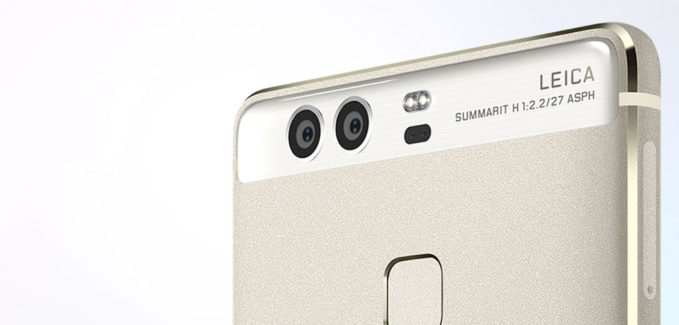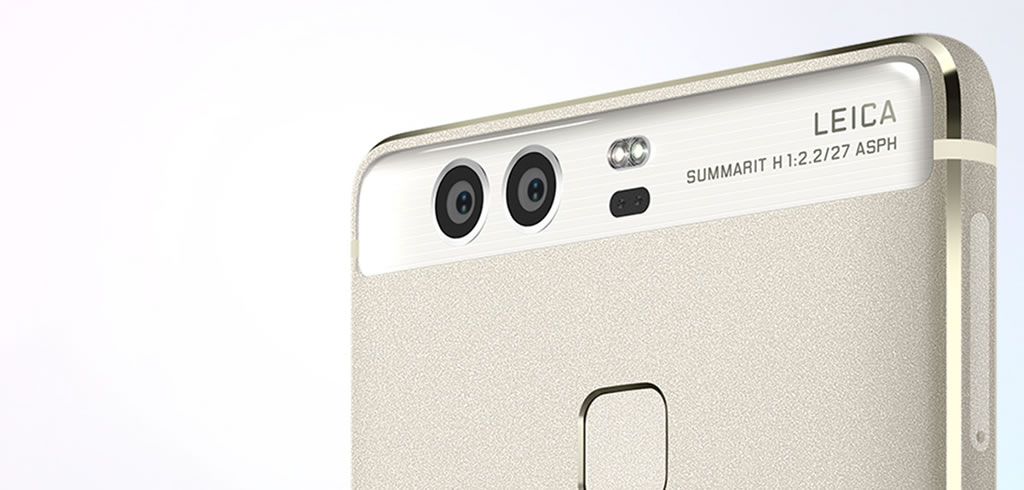
Chinese technology firm Huawei has its sights set on dominating the smartphone market, with its CEO predicting they would leapfrog Apple in market share in three years and Samsung by 2023. Those are some big claims, but with the progress they are making with phones like the P9 it could be possible.
The look
The P9 is one of the best looking handsets on the market with a flat-sided unibody metal chassis and a near bezel-free display. It’s light and super-slim at only 7mm, and a comfortable size to fit in one hand with with relative ease – with a real Apple-like focus on the finer details.
The hardware
The P9 is a flagship smartphone and has the specs to match with Huawei’s own Kirin quad-core 2.5GHz Cortex-A72 running the show with 3GB of RAM, making the phone run buttery smooth all the time. The smartphone is supported by a 3,000mAh battery, which gives you more than a day’s worth of good use on a single charge.
You can choose between 32GB and 64GB of onboard storage, with the ability to boost that by another 128GB with a MicroSD card. You are not able to run apps form the MicroSD, which some may find annoying, but this improves the performance and I don’t have more than 32GB of apps anyway, so it was never an issue for me.
The display is a near bezel-less 5.2″ beauty offering full HD (1920×1080) at 423ppi. The pixels per inch may be significantly less than the likes of the Samsung Galaxy S7’s 557, but once you get over about 350ppi it becomes very difficult to tell the difference and it is always a compromise with battery life anyway.

The camera
Huawei are pushing the P9 as the “ultimate camera-phone”, and to help them reach that goal they brought in the help of German imaging specialists Leica. The result is a dual lens 12 MP, f/2.2, 27mm rear camera, with a dual LED flash that produces some of the best images I have seen from a smartphone, on a par with the images from the 23MP images taken with the Sony Xperia Z5 or the iPhone 6S.
Most people will just use their phone’s camera for quick shots with automated settings, but for those looking to get more involved, the P9 offers a Pro camera mode, with manual control for focus, ISO, shutter, speed, exposure, and white balance. Those with a bit of knowledge can use these settings to take some fantastic shots, but there will be a bit of a learning curve for those without a history of SLR use.
There’s also an 8MP front-facing camera, which does a decent job for Skype and selfies, which is all anyone really wants there.
The software
The P9 is running Google’s latest 6.0 (Marshmallow) version of Android, with all the new features, such as the battery-saving “Doze” mode, but Huawei have deemed it necessary to overlay the OS with its own “Emotion UI” skin. Those that have previous Huawei devices may feel at home with Emotion UI, but I am a big fan of stock Android’s material design and wish manufacturers would just leave it alone. Emotion UI looks to be a middle ground between Android and iOS, removing the App tray and some of the Quick Settings shortcuts, and works perfectly fine – but it is my biggest hangup about the P9.
Heavy skins like Emotion UI also tend to mean that Android updates are much slower getting the the device, so if you want Android N as soon as possible, then this may be worth considering.
The verdict
Huawei may very well have made the best camera phone on the market today, and the P9 is a beautiful flagship device. It’s about £100 less than the flagship devices from its rivals, which make it a great buy – but it is let down by a problematic UI skin.

